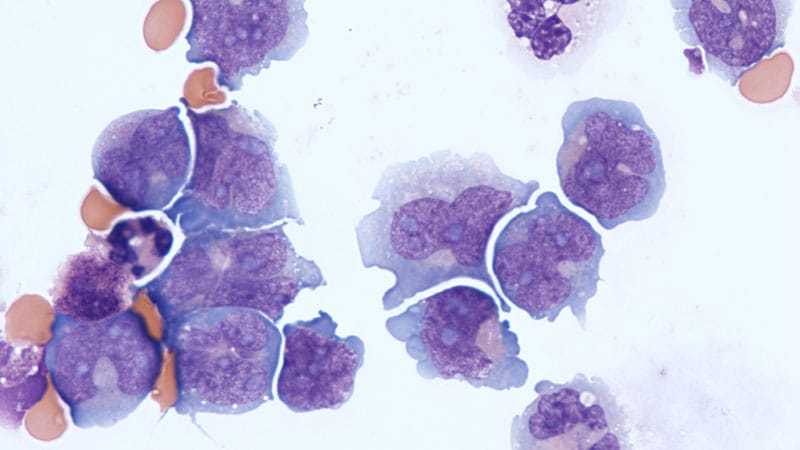TOPLINE:
CD37, a surface protein present on most acute myeloid leukemia (AML) blasts, demonstrates unique internalization properties that enable targeted drug delivery with minimal impact on normal blood cells. Anti-CD37 antibody-drug conjugate (ADC) shows specific cytotoxicity to AML blasts while preserving normal hematopoietic stem cells.
METHODOLOGY:
- Researchers analyzed CD37 expression in 55 untreated, newly diagnosed primary AML samples, along with normal hematopoietic stem cells, peripheral blood mononuclear cells, and AML cell lines.
- Analysis included internalization assays using anti-CD37 antibody conjugated to fluorochrome Alexa Fluor 647, with cells incubated for 2 hours at 37 °C vs on ice to quantify surface and intracellular CD37.
- Investigators conducted in vivo studies using NOD scid gamma mice and NRGS mice treated with 25 mg/mL busulfan, followed by weekly monitoring of disease burden through flow cytometry.
TAKEAWAY:
- CD37 surface expression was identified on all primary AML blasts examined, with varying levels of expression not correlating with European LeukemiaNet classification or overall survival.
- AML blasts demonstrated significantly higher CD37 internalization frequency than normal B cells (P = .001) and monocytes (P = .01), independent of surface expression levels.
- Primary AML samples with activating signaling mutations showed a trend toward increased CD37 internalization frequency (P = .053) than those without signaling mutations.
- Treatment with anti–CD37-DM1 significantly improved clinical outcomes and overall survival in multiple in vivo models of AML while showing minimal toxicity in humanized CD37 knockin mice.
IN PRACTICE:
“CD37 is a surface receptor present on most AML blasts, which has unique internalization properties when compared with normal blood cells. Treatment of AML with anti-CD37 ADC demonstrates specific cytotoxicity in vitro and improved overall survival in vivo,” wrote the authors of the study.
SOURCE:
The study was led by Erin Jeremy and Esthela Artiga, The Ohio State University in Columbus, Ohio. It was published online on January 14 in Blood Advances.
LIMITATIONS:
According to the authors, variations in CD37 expression in response to laboratory manipulations such as Ficoll-Hypaque cell separation and cryopreservation may have affected the detection of CD37 on AML cells with inherently lower levels of expression. The researchers also note that they were unable to associate pathologic characteristics with membrane trafficking and cytotoxic activity within their cohort of samples.
DISCLOSURES:
Karilyn T. Larkin received research funding from Debiopharm. The remaining authors reported no competing financial interests.
This article was created using several editorial tools, including AI, as part of the process. Human editors reviewed this content before publication.
Source link : https://www.medscape.com/viewarticle/combat-leukemia-researchers-harness-cd37-2025a10000wh?src=rss
Author :
Publish date : 2025-01-15 04:51:10
Copyright for syndicated content belongs to the linked Source.
